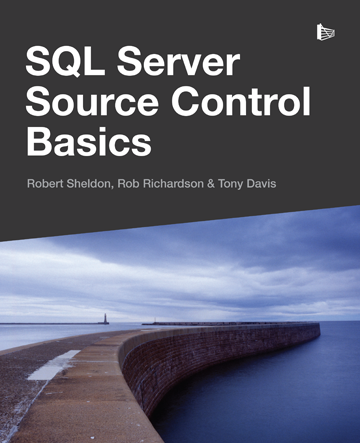@rob_rich
Get Your Database Under Control
by Rob Richardson
July 21, 2014
About Me

Rob Richardson is a software craftsman building web properties in ASP.NET and Node. He's a frequent speaker at conferences, user groups, and community events, and a diligent teacher and student of high quality software development. You can find this and other talks on http://robrich.org/presentations and follow him on twitter at @rob_rich.
Continuous Integration is
part of a larger vision
"The goal is
to get from backlog
to customer value faster"
-me ... right now
Larger vision

| Team Interaction |
Continuous Integration |
Deployment |
Goals

| Team Collaboration |
Continuous Integration |
Deployment |
|
|
|
Tools

| Team Collaboration |
Continuous Integration |
Deployment |
|
|
On Premise:
Cloud PaaS:
|
Tools

| Team Collaboration |
Continuous Integration |
Deployment |
|
T |
F |
S |
How do we get there?
Phases of Automation
- Source Control
- "The Build"
- Automate all the things:
gain confidence - Automate deploying
and monitoring
source: building an automated deployment pipeline, slides 17-21
Source Control
Goal: Store all the things
- Application source code
- Database details
- Configuration data
- Test tools
- Deployment scripts
"The Build"
Goal: A neutral environment
- Command-line compile
- Run a test
- Collect results
- exit code:
- 0 = success
- everything else = fail
Automate all the Things
Goal: Gain confidence in development efforts
- Run unit tests
- Run integration tests
- Deploy to a test server
- What do we do a lot?
- What is hard?
Automate Deployment
Goal: A single button push sends it to production
- Application content
- Secure configuration store
- Production machine list
... but databases are hard.
Database development
can learn a lot from
Application development ...
Phases of
Database Automation
- Source Control
- "The Build"
- Automate all the things:
gain confidence - Automate deploying
and monitoring
source: building an automated deployment pipeline, slides 17-21
Databases are not Different
The only difference between application development
and database development is we need to
care for the data during state changes
Databases are not Different
- Apps can blow it all away and start over
- Databases need to preserve the data
- Databases need to safely transition data between states
Step 1: Version Control
The Scripts
-
Create scripts:
Store sql to create each object, update it over time -
Transition scripts:
Store sql to transition from old state to new state
The scripts
| Type | Pros | Cons |
|---|---|---|
| Create scripts |
|
|
| Transition scripts |
|
|
The scripts
| Type | Typical Use-case |
|---|---|
| Create scripts |
|
| Transition scripts |
|
DEMO:
Visual Studio Data Tools
DEMO:
SQL Source Control
Step 2: The Build
The Build
- Dovetail with the application build
- Validate sql scripts
- Run stored procedures
The Build Resources
Step 3: Automate all the Things
Automate Database Deployments
- Migration scripts
- Restore production backup
- tSQLt
Tools

| Team Collaboration |
Continuous Integration |
Deployment |
|
|
On Premise:
Cloud PaaS:
|

SQL Server Source Control Basics
Download eBook | Buy on Amazon
For efficient team-based database development, and reliable and repeatable database deployments, going without source control isn't really optional any more. Quite apart from making it easier to work together, roll back, and share changes, it's the cornerstone of better change management and continuous integration.
But how do you get started? Database development traditionally hasn't used source control at all, and there's a bit of ground to cover before jumping into version control.
This book provides just the right combination of theory and practical example to get you started quickly.
Resources
- Database Delivery Patterns and Practices
- Building an automated deployment pipeline
- Continuous Integration using Red Gate Tools Whitepaper
- Using SqlCI.exe in an automated build
- Enable Migrations v2 in SQL Source Control
- SQL Server Data Tools (SSDT)
- Introducing SQL Server Data Tools (SSDT)
- Setting up TeamCity in IIS 7
- Continuous Integration for SQL Server